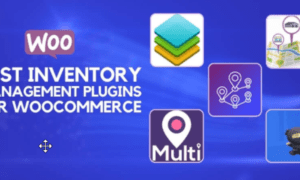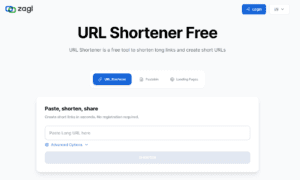In today’s digital age, where businesses thrive on data and analytics, understanding the concept of account scoring is crucial. Whether you are a seasoned marketer or a business owner looking to optimize your strategies, this article will delve into the depths of account scoring, uncovering its significance, components, and how it can fuel your success.
What is Account Scoring?
Account scoring, also known as lead scoring for B2B organizations, is a systematic process of evaluating and ranking potential customers or accounts based on their likelihood to convert into paying customers. It involves assigning numerical values or scores to different attributes and behaviors of leads or accounts, helping businesses prioritize their sales and marketing efforts effectively.
The Importance of Account Scoring
Account scoring serves as the compass that guides your marketing and sales teams. By distinguishing high-potential accounts, you’ll designate your assets more proficiently, centering on leads that are more likely to change over.
In this rapidly evolving business landscape, mastering account scoring is the key to staying ahead of the competition. Implementing a robust scoring system can transform your sales and marketing strategies, ensuring that you’re always focused on the accounts most likely to drive your success. So, don’t wait any longer; start your journey towards optimized account scoring today!
Components of Account Scoring
Demographics and Firmographics
Understanding the basic characteristics of your target audience, such as industry, company size, and location, is fundamental. These demographic and firmographic data points help you segment your accounts effectively.
Engagement Metrics
Analyzing how leads interact with your content emails, and website provides insights into their level of interest. Metrics like email open rates, click-through rates, and website visit duration play a vital role.
Purchase History
For existing customers, their past buying behavior is a goldmine of information. Analyze what they’ve purchased, how often, and when. This data aids in predicting future purchases.
Lead Source Analysis
Understanding where your leads come from can highlight the effectiveness of your marketing channels. Certain lead sources may consistently yield high-converting accounts.
How to Create an Effective Account Scoring Model
Define Your Ideal Customer Profile (ICP)
Start by putting together a thorough profile of your potential client. What sectors do they work in? What difficulties do they encounter? What are their goals? Defining your ICP is the foundation of a successful scoring model.
Weighted Scoring Criteria
Assign different weights to the attributes and behaviors based on their importance. For example, a lead’s job title might be more critical than their location, so it should have a higher weight.
Data Integration and Automation
Integrate your scoring model with your CRM and marketing automation platforms to keep them current. Automated systems make sure that scores are updated as soon as fresh information becomes available.
Benefits of Account Scoring
Increased Efficiency: By focusing your efforts on high-scoring accounts, you make the most of your resources.
Improved Conversion Rates: Higher-scoring leads are more likely to convert into customers.
Alignment of Sales and Marketing: Account scoring facilitates better collaboration between your sales and marketing teams.
Common Mistakes to Avoid: Ignoring Data Quality: Inaccurate data leads to incorrect scoring, so ensure your data is clean and up-to-date.
Static Scoring Models: Your scoring model should evolve with your business and changing customer behaviors.
Real-Life Success Stories
Many businesses have witnessed remarkable success by implementing account scoring. One such example is XYZ Corporation, which increased its conversion rate by 30% within three months of adopting a robust account scoring model.
Implementing Account Scoring in Your Business
To implement account scoring effectively, follow these steps:
Data Collection: Gather relevant data about your leads and customers.
Define Scoring Criteria: Determine the attributes and behaviors that matter most to your business.
Assign Weights: Give appropriate weights to each criterion.
Automation Integration: Ensure your scoring system is automated and integrated with your existing systems.
Regular Evaluation: Continuously monitor and adjust your scoring model as needed.
Future Trends in Account Scoring
As technology evolves, account scoring will become even more sophisticated. Businesses will look into new data sources for improved insights, and machine learning algorithms will increase the predictive accuracy.
Conclusion
Businesses will look into new data sources to improve prediction accuracy as a result of machine learning algorithms. Account scoring is not just a trendy term; it is revolutionizing the sales and marketing industries. You can streamline your efforts, increase conversion rates, and ultimately spur business growth by carefully assessing your leads and accounts.
FAQs
Q: What’s the difference between lead scoring and account scoring?
A: Lead scoring focuses on individual leads, while account scoring assesses the potential of entire accounts or companies.
How frequently should my scoring model be updated?
A: To form beyond any doubt your demonstrate precisely speaks to the state of the advertise, it is best to overhaul it as often as possible, at slightest once each three months.
Q: Can small businesses benefit from account scoring too?
A: Absolutely. Account scoring is scalable and can benefit businesses of all sizes.
Q: Are there software tools available for account scoring?
A: Yes, there are various software solutions and CRM platforms that offer account scoring features.
Q: Is account scoring only for B2B businesses?
A: While it’s more commonly used in B2B, B2C businesses can also benefit from account scoring, especially for high-value customer segments.



































